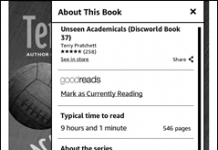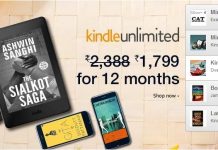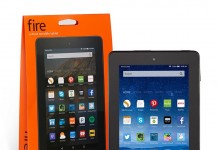 iPad sales are through the roof, Kindle and ereader sales are climbing, but what about reading on phones? My strong suspicion is that this is the place where the majority of ereading will, and maybe does, take place.
iPad sales are through the roof, Kindle and ereader sales are climbing, but what about reading on phones? My strong suspicion is that this is the place where the majority of ereading will, and maybe does, take place.
Look at the continual growth of Wattpad, especially in third world countries. Phones are ubiquitous, even there.
What made me think about this is an article in Unwired View about smartphone use in the UK. 73.5% of the UK market was made up of smartphones in June. This is up from 55% in the first quarter of this year and from 66.7% from the second quarter.
The article also discusses the increase in Android growth in the UK. Up 350% from Q1 to Q2 of this year. As to the US, I don’t have the numbers to hand, but just go into any phone store – AT&T, Verizon, Sprint, T-Mobile- and look at the dramatic increase in smartphones on the counters.
As to reading, the iPhone, 3 or 4, makes an excellent reading platform, the new Samsung Galaxy series does as well, and also the Droids. It’s too early to tell yet, but my suspicion is that the real hype should be about smartphones, not tablets or dedicated readers.

































Maybe reading on a smartphone works for the CASUAL reader or one who is standing in line and just needs to kill a few minutes; but no serious reader would consider their phone their primary reading device.
Even if they could accept the tiny, backlit screen, (hope they’re not waiting in line in the sun), the battery would die long before they were ready to set their book down for the night.
This might be fine for anyone under the age of 40, but for those of us who are “golden” reading on a smartphone is just too hard on the eyes.
Actually, I’m over 40 and find reading books on the phone very comfortable – narrow columns are easier to scan (ala the New Yorker) and you can crank up the font size.
Plus: no need for a booklight!
I think single function eBook Readers will always be a accessory purchase where “most consumers” will just use their multi-function smartphone for all this.
I actually read more on my iPod Touch (before I lost it) than I did on anything larger, including either of the e-ink readers I got to try out and review.
Even now, if I had an iPhone or iPod Touch (which may happen sooner than later, now that I have a full-time job again) I’d probably read on it more than on the iPad. I could put it in my pocket much more easily.
Back in the days when the Pendergrasts were still allowed to make public statements, they reported (in a comment here that I don’t have time to google at the moment) that a lot of people were actually selling or returning their 1st-gen Kindles in favor of the iPhone or iPod Touch as a reading platform. I suspect that the new, double-resolution iPhone 4 will make it even more tempting.
I don’t think it’s necessarily an either/or decision. I prefer to read books on my Kindle, though if I’m stuck somewhere without my Kindle, I’m glad that I can just pull my smartphone out and continue reading. I prefer reading newspapers on my smartphone, because it’s easier to skim articles on the smartphone. However, if a smartphone were my only option for ebooks, I’d probably stick to paper books. If a backlit screen were my only option for ebooks, I’d stick with paper books. E-ink was the technology that convinced me that I could enjoy reading electronic books.
I don’t see “the majority of ereading” happening on a smartphone either. Snippets, quick reads — sure.
The analogy is movies. Yes, some people will watch an entire movie on an smartphone; but mostly its valuable for quick clips, breaking items, viral social stuff like YouTube is so good at distributing.
Curl up long form, lean back reading — it’s hard to imagine some sort of vaguely book-like sized device not holding the long-term lead. This is also true as “ereading” is supplemented by multimedia consuming embedded in a long form reading context. So, as magazines add more video, interactive content, tablet sized devices will be preferable to smartphone form factor.
I wish everyone would stop with the age thing! I have been reading EBooks since they were availble for Palm and PPCs. Went to Symbian phones, and now iPhone. I am 58, and have NO probeem reading on these devices..actually find the iPhone quite comfortable for reading. If you don’t like the glare, get a non-glare screen protector, it solves that problem. I use the 3GS with no protetotr, and find it quite easy to read on. I am almost exclusivley using the iPhone to read, while my wife prefers her NOOK as it is better on the subway (hand shakes too much while train is moving to be able to read, the only reason).
But age us NOT a factor here, even though I use glasses.
It is what you get used to, and it never interferes with my enjoyment of the book, rather I can enjoy books anywhere at anytime and they are always in my pocket.
I’m with Julius. Let’s drive a stake through the age-thing.
I love reading on my iPod touch, but I find I’m doing so less & less, using it much more to listen to podcasts. For reading I still prefer my Kindle, unless I’m in line or on my lunch break (where I am presently more likely to listen to a podcast than to read; and if I’m going to read I’ll probably pull out my Pre first and check my e-mail).
The only issues for me with the iPod are the ‘curl-up’ factor; and reading in the sun. My train is sunny over the summer, and in the winter the lights are glare-y, even with an anti-glare screen protector. I don’t like to hold my book or device in my hands while sitting on the couch. On my lap, the touch is tippy and too low, when it’s not slipping between my legs or the couch cushions; which it mostly is. At the doctor’s office, or sitting at a table, it’s great.
But here’s the thing. If I were to have but a single device, I’d pick the touch; and I think most people these days do want just one device for reading etc. — so they can buy a Wii.
Sherri and Julius have it right. “Let a hundred flowers bloom; let a hundred schools of thought contend.”
I read on a 2.8″ smartphone, a pair of 3.5″ PDAs, a 5″ jetBook, or a 17″ laptop, as the spirit moves me. They all have their advantages (converged ubiquity, backlights, sunlight readabiltiy, giant screen, etc.) and disadvantages (battery life, small screen, too large to always carry, too heavy). I don’t see any of that changing.
It’s a little monomanical to say “The real future of ereading is only the ______!” You might want to talk to someone about that. 🙂
Regards,
Jack Tingle
I love my Kindle and there is no way I would read a book on my Android phone, the screen is too small. I flip pages on my Kindle fast enough as it is. I can barely stand to read my email on my phone.
As for age, even my teens don’t read on their phones, they read physical books, although my daughter has been also reading books on her netbook to take advantage of free books through Amazon.
If you are a dedicated reader, you’re reading physical books or on an ereader, not a phone.
I think there are parts of the market that just want one device to read on, and that device would be a smartphone. I know people in this part of the market; they own smartphones and game machines, but not computers. There are other parts of the market who don’t really care about having one device that does everything; I see people like this, too. They have a Kindle, because the smartphone is replacing the Nintendo as the portable game player and so the kid is using mom’s smartphone. Point is, I’m not sure there is “most people”, and even if there is, it’s not necessarily true that the market with the most people is the market that has the most money, or spends the most money on books.
We are only in the first baby steps of this new technology and market and the eReaders we now have will be seen as primitive in 5 years time. Personally I have no doubt that in five years time we will have incredibly thin and light and clear eReaders of 6-8″ in size that will have all touch screen controls and huge battery life. I do indeed read on my iPhone but this is only the beginning …
I was sceptical about ebooks before I got my Touch last October. I quickly became a big fan and do virtually all my reading now on my Touch. I doubt I’ll ever buy a Kindle or other ereader, and I would only buy an iPad because of its other functions. Advantages to the Touch: low light in the room at night is no longer a problem; I can slip the Touch into my purse (no matter how much other junk I have in there) to read while waiting in lines, etc; the color screen is great for children’s books to entertain my grandniece while we’re waiting in lines, etc; I can listen to music and read using just one device; I find it more comfortable to hold the Touch as opposed to a pbook with a stiff spine. Plus, I agree with Katherine about the narrow lines being easier to scan – I read faster on the Touch than I do from a pbook.
As for the age thing, I’m over 50 and have no trouble with the Touch’s screen. My 24YO niece, on the other hand, does have trouble with it. Apparently, its the individual, not their age.
The bottom line is that a variety of devices exist because there is so much variation in what works for individuals. “One size fits all” definitely does not work in this context.
I think anything with a display will be outdated in maybe 10 years. The idea of linking a display to a device should have gone out with the first Mac. Without displays, devices could be incredibly portable and much cheaper. Since we need displays for just about everything we do, doesn’t the future have to be either a “display in sunglasses” or even direct to retina projection?
Rob Preece
Publisher, http://www.BooksForABuck.com
I believe a mobile phone is a great tool to make people familiar with e-books. There are billions of smartphone users around the world and the only thing they need to do is to download an app (or use a browser). Entry cost to read e-books? Zero.
The situation outside USA is essentially different. In Poland we’ve got some 5000 Polish titles in electronic format (including public domain). E-reading devices are much more expensive. In such a scale the rationale behind buying an e-reader is much weaker. On small markets it’s smartphones to get people involved. Some of them, those who read a lot, will buy a bigger device eventually. And this is the right order: first smarthone, then e-reader/tablet.
What people ARE MISSING is a knowledge. I’m sure 99% of those billions don’t know, that they can turn their phone into an e-reader in a couple of minutes. Content distributors don’t care, as they want to sell their own devices. Cellphone apps are for them just an extention. First e-reader, then smartphone – this order is good for sellers, not buyers.
If any of the heavy e-book readers wrote one article on how to start reading on a mobile phone, those digital natives, who are born with a mobile phone in their hand, would at least be given a chance. Otherwise they’ll keep texting, watching videos and playing games on their phones. Don’t you think any of those activities is actually harder than reading?
Some more thoughts to share:
8 myths about reading books on a mobile phone:
http://www.passwordincorrect.com/2010/07/02/8-myths-about-reading-books-on-a-mobile-phone/
4 ways to turn a mobile phone into an e-reader:
http://www.passwordincorrect.com/2010/03/06/4-ways-to-turn-your-mobile-phone-into-an-e-reader/
Please share them to anyone, who can’t afford an e-reader or a tablet.
A great example of someone already doing this is Ether Books (www.etherbooks.co.uk). They produce short stories for iPads, iPhones and iPod touch.
But, again, I have to point out battery life. Yesterday I read the NYTimes for an hour or so on my K. Then I slipped her in my purse and went out to run errands, stopped for coffee and finished the newspaper and then read a book while waiting at the dentist’s office for a 1/2 hour before coming home. I settled in to read for another hour before dinner, then spent the evening curled up with my Kindle. At bedtime, I read for another 45 minutes or so before turning out the light.
All told, I probably got 6 hours out of my Kindle 1, all without having to recharge. And, this morning, my K is still showing 3/4 battery strength…I may have to charge her–tomorrow.
My Smartphone, after checking e-mail, making one phone call and having it set to Bluetooth setting for driving had to be put on the charger as soon as I got home yesterday afternoon.
You can ignore font size, screen size, backlighting in sunlight or bright indoor light, etc. etc. You’re still not going to satisfy a serious reader with a device whose battery has to be charged more than once a day.
I’m not saying that reading for a few minutes on a phone you can slip into your pocket isn’t great. It’s just not going to be the “premier” device of choice until it can do everything, all day, and still have juice left over.
“If you are a dedicated reader, you’re reading physical books or on an ereader, not a phone.”
This attitude, particularly on e-reading sites, drives me bonkers. I’ve read 600+ e-books in the last 7 years, 95% of them on either a Clié, Treo or now, an iPhone. And yes, this year I invested in an e-Ink device, now that they are reasonably priced for a single-use device. But I still read on my iPhone – just read two books on it the last week.
People have been e-reading well before the Kindle and e-Ink, and frankly, e-reading might not have ever hit the mainstream if it weren’t for all the pioneers reading on Palms, PPC and smartphones, driving enough sales that Amazon and publishers felt the e-book market had “arrived.”
For those who complain about battery life – do you not have an outlet next to your reading chair or bed? It’s really not that big of a deal to lay in bed with an iPhone plugged in next to the nightstand. Certainly not any worse than holding a Kindle with a booklight.
Are you looking at this webpage? Then you’re e-reading. If you’re still complaining about “reading tiny glowy screens”, well, that ship has sailed.
January has a point, but there are a number of small rechargeable energy sources for smart phones and iPods that easily solve the battery problem.